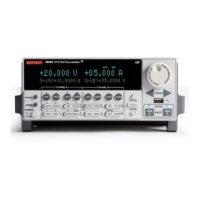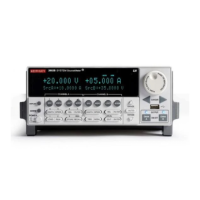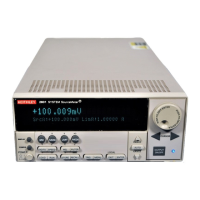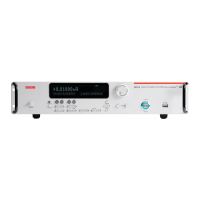System SourceMeter® Instrument Reference Manual Section 7:
2600BS-901-01 Rev. B / May 2013 7-377
Details
The tspnet.write() function sends inputString to the remote instrument. It does not wait for command
completion on the remote instrument.
The Series 2600B sends inputString to the remote instrument exactly as indicated. The inputString must
contain any necessary new lines, termination, or other syntax elements needed to complete properly.
Because tspnet.write() does not process output from the remote instrument, do not send commands that
generate too much output without processing the output. This command can stop executing if there is too much
unprocessed output from previous commands.
Example
tspnet.write(myID, "runscript()\r\n")
Commands the remote instrument to execute
a command or script named "runscript()" on a
remote device identified in the system as
Also see
tspnet.connect() (on page 7-367)
tspnet.read() (on page 7-370)
userstring.add()
This function adds a user-defined string to nonvolatile memory.
Type TSP-Link accessible
Affected by Where saved Default value
Function Yes
Usage
userstring.add(name, value)
The name of the string; the key of the key-value pair
The string to associate with
name
; the value of the key-value pair
Details
This function associates the string value with the string name and stores this key-value pair in nonvolatile
memory.
Use the userstring.get() function to retrieve the value associated with the specified name.
You can use the userstring functions to store custom, instrument-specific information in the instrument, such
as department number, asset number, or manufacturing plant location.
Example
userstring.add("assetnumber", "236")
userstring.add("product", "Widgets")
userstring.add("contact", "John Doe")
for name in userstring.catalog() do
print(name .. " = " ..
userstring.get(name))
Stores user-defined strings in nonvolatile
memory and recalls them from the
instrument using a for loop.
Also see
userstring.catalog() (on page 7-378)
userstring.delete() (on page 7-378)
userstring.get() (on page 7-379)
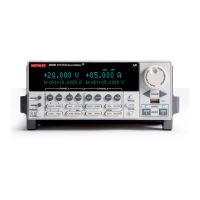
